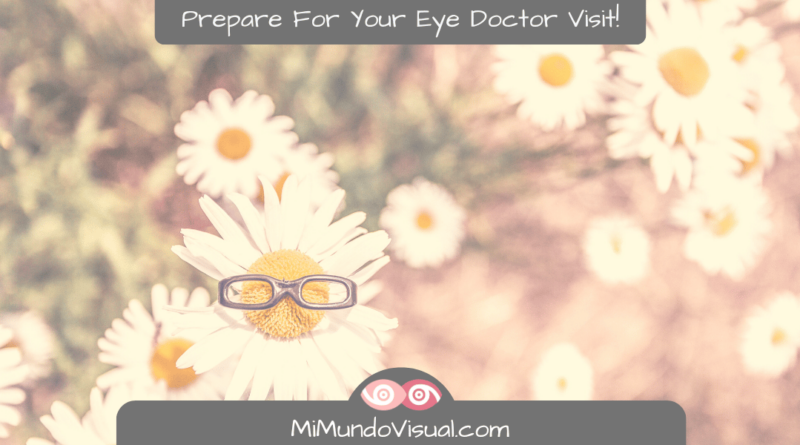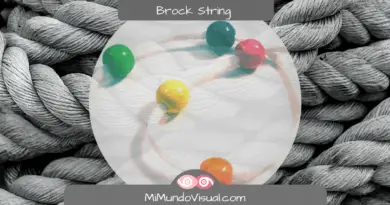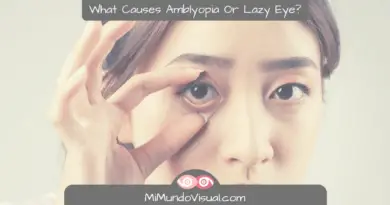Amblyopia? Prepare For Your Visit To The Eye Doctor!
Table Of Contents
What We Need to Know Before Visiting the Ophthalmologist for the First Time
First visit with the Ophthalmologist? If you’re looking for some good questions to ask your Ophthalmologist on your first visit, even if it’s just a routine checkup. Perhaps you noticed odd behavior concerning your child’s eyesight.
- rubbing of eyes a lot for no apparent reason
- Complaints of headaches,
- You might notice reading issues like skipping sentences in the text,
- Writing words where letters are often missing or you
- You detect your child doesn’t seem to record colors perfectly,
- Notice that he sees more with one eye than the other…
- Squinting with the eyes
Any reason to make a first consultation is valid, and it never hurts to anticipate when it comes to eye care. Any eyesight issue is best detected as early as possible.
Today’s blog post describes a situation where we prepare for the first visit to the eye doctor with a potential diagnosis of a child suffering from Amblyopia or ‘Lazy Eye.’
However, you can apply our advice for any eye-related visit to the eye doctor. We hope that it can also serve as a guide and support to face any other type of pathology since there are guidelines that we can follow at any time to deal with a visit to the doctor.
The fact of the matter is that eyecare matters are complex, and we are often ill-prepared when we visit an eye doctor.
- Few of us are familiar with the lexicon used in eye care.
- It is easy to become overwhelmed when there is a diagnosis or an issue with our eyesight or that of our child or other family members.
- We usually don’t prepare a list of questions,
- Can we describe the anomaly we observe in easy terms?
- Did we prepare for the waiting room with our child?
- Are we prepared for the emotional impact on our child if an issue is detected? Therapy? Glasses?
We will discuss how to prepare ourselves to go to the Ophthalmologist for the first time.
How to experience the moment of meeting the Ophthalmologist in the consultation room and how to get to know his subsequent assessment,
as well as the moments that follow.
In many countries, visits to the Ophthalmologist were traditionally made at an older age. Fortunately, nowadays, it has been proven that early detection and treatment guarantee a better success rate.

You might have a lot of doubts before going on to first visit the Ophthalmologist:
In this article we’ll cover:
- How to prepare for our visit to the eye doctor?
- What to consider before, during and after the appointment.
- How to deal with diagnosis and treatment phase as a family
More About Amblyopia or Lazy Eye
- How Do I Know If I Have A Lazy Eye?
- What Causes Amblyopia Or Lazy Eye?
- How To Detect A Lazy Eye?
- What is Amblyopia?
- 6 Eye Patch Therapy Inconveniences We Are Not Told About
- How To Choose The Best Eye Patch For My Child?
- Contact Lenses For Children With Lazy Eye!
- 5 Questions About Lazy Eye In Adults!
- Lazy Eye In Adults – Little Everyday Difficulties That May Be Due To Amblyopia!

Preparing the first visit To the Ophthalmologist
Preparation Before Going To The First Visit With The Ophthalmologist
Some of the things we have to consider:
- How to choose the best doctor?
- Understanding the importance of finding an eye doctor with whom we have confidence since the treatment may differ from one professional to another.
- Guide your child’s attitude toward the visit.
Some countries offer Social Security routine checkups free of charge, or you might have health insurance to cover the cost. Still, you also might have to go for a private ophthalmologist? And if so, what is the cost of the consultation and subsequent treatment? Unfortunately, eye care doesn’t usually come cheap. So, do your homework beforehand and find a suitable eye doctor with good reviews.
Prevention is the key! You don’t want to save money on a routine checkup as the cost of treating an issue that is detected too late comes at a much steeper price, both for your health and your wealth.
Yes! Prevention is better than cure!
The issue, for example, with being confronted with a visual defect like Amblyopia, is not just the fact that you have to deal with vision deficiency. Detecting Amblyopia in a child will initiate a rather lengthy process that has to be gone through if we want to resolve the issue of Amblyopia.
It will require effort and support from the family to go through this in the best possible way. However, the earlier Amblyopia has been detected, the better your chances are for a quicker resolution to the problem, and fewer vision therapy sessions will be required.
Once we have chosen the professional, we will have to prepare the process, first by scheduling an appointment and then by mentally preparing our child.
The child must have a good ‘feeling’ about what will happen, so it will be necessary to prepare them well.
A routine checkup with the Ophthalmologist could quickly turn into a situation where eyedrops have to be used to dilate the pupils. The truth is that this can be uncomfortable.
So it is a good idea to comfort them and explain what they can expect. This will help create a positive attitude towards the visit and the Ophthalmologist or optometrist treating your child.
The waiting Room!
Sometimes, the wait in the consultation room can be extended. The extra long wait can also be related to the fact that your child might be given some eye drops to dilate the pupils to make a better evaluation.
Depending on your eye doctor, eye drops are applied all at once, or they are applied up to 2 or 3 times at approximately 15-minute intervals, allowing the pupils to dilate appropriately. So that will add to the ‘waiting time’!
To prepare for that long wait, we can ensure that we have prepared some things to entertain the child, like something to color, play with, drink, eat, or watch on a mobile phone or tablet.
In the case eye drops are applied:
- You need to be ready because they tend to sting and bother the eyes.
- They are usually uncomfortable and turn your child’s eyesight blurry.
- During the dilation process, it is advisable to close the eyes, as they tend to make the eyes tired and sleepy.
So the child may feel tired and want to rest on our lap while facing the long wait.
All in all, the entire process before the actual consultation with the eye doctor can take some time. However, suppose we have already prepared the child, explaining the eye drops, how they will put them in their eyes, and so on. In that case, it should be easier on them and on you as a parent.
Then we will indicate when it will be necessary to act more actively in the consultation with the doctor to conduct the examination in the best possible way.
We will explain in a language that the child can understand the whole process and understands what is happening so that they can better assimilate it and collaborate.
In the Oftamologhists office
On the other hand, when we enter the consultation, it is important that:
We, as parents, do not interfere in the process: we will leave the development of the visit in the hands of the eye professional.We also want to avoid transmitting our own emotions or fears about the possible diagnosis to our child.
Imagine, for example, that the child cannot see something that we ourselves can see.
Do not let your child notice our fear, frustration, or sadness because they cannot see it.
We want to avoid our child feeling pressured! This way, we help ensure that your child correctly follows the Ophthalmologist’s indications and thus allow them to provide more accurate information about your child’s visual capabilities.
The Ophthalmologist will perform different tests that will result in assessments for different parts of our visual capacity. A series of specialized tools detect any anomaly in our child’s vision.
Subsequently, the eye doctor provides a diagnosis, followed by a prescription if necessary.
Part of our goal of coming prepared is to be ready for this moment where the doctor is ready for the ‘Questions’ and ‘Answers’ part of the session. Have your list of questions written down, plus be prepared to write down the Ophthalmologist’s answers. Doctors usually speak very fast and in a language, we are often unfamiliar with and do not always understand.
Even though we understand everything in the doctor’s office, it is common for us to forget important parts of what was said after a few hours or days.
By writing things down or recording them if your doctor allows it, we can gather the necessary information to, perhaps later, make a more exhaustive analysis of what was said on our own, or share it with other family members, and so on. It also helps us to reformulate our questions if the answers need to be clarified to us.
Sadly, in our case, Amblyopia was diagnosed. So how do we take this forward?
Is Amblyopia a handicap? Can it be operated on? Can it be cured? Can Amblyopia return once visual acuity is recovered? How can you detect a Lazy Eye? Are you born with a lazy eye? What happens if it cannot be treated in time? What consequences can Amblyopia have? What does this mean for the future of your child?
It is advisable to prepare before going to the consultation. Since we often walk out the door and realize that we have many doubts still unanswered.
What happens After Our Visit to The Eye Doctor?
Create A Diagnosis-Based Plan
After the Ophthalmologist has made a diagnosis, it is time to make a plan.
Typically, no doctor can guarantee that our child’s vision will be 100% restored. However, we will embark on a path to help maximize the improvement.
Since we are dealing with Amblyopia, we will face different treatment options and essentially different ways of dealing with this pathology, such as eye-patching or vision therapy, or both.
Vision therapy is very time-consuming, and occlusion therapy with an eyepatch is emotionally highly challenging to handle as a child.
It will drastically change our daily routine for a while. Managing the daily therapy and the child’s emotions is difficult for any parent.
Once we have started the treatment
As we are immersed in our new routine, many questions that didn’t arise in the consultation may start emerging. Be
Be sure to write down these questions and observations so you can discuss them with the Ophthalmologist or optometrist at the next visit.
It will also help us -as parents -to understand what is happening at all times so that we know how to guide our efforts.
Amblyopia is not usually something that can be treated in the short term. Instead, it is a condition that requires some time to resolve and, above all, determination and perseverance.
This can be challenging, as our lives tend to be already sufficiently burdened with responsibilities.
Amblyopia or Lazy Eye is very impactful for your child. They will need your guidance!
As we are immersed in our new routine, many questions that didn’t arise in the consultation may start emerging. Be
Be sure to write down these questions and observations so you can discuss them with the Ophthalmologist or optometrist at the next visit.
It will also help us -as parents -to understand what is happening at all times so that we know how to guide our efforts.
Amblyopia is not usually something that can be treated in the short term. Instead, it is a condition that requires some time to resolve and, above all, determination and perseverance.
This can be challenging, as our lives tend to be already sufficiently burdened with responsibilities.
Hay que ser conscientes de que la ambliopía no suele ser algo que pueda tratarse a corto plazo, sino que es algo para largo plazo y requiere determinación y constancia
How does Amblyopia Diagnosis affect your Child?
When diagnosed with Amblyopia, their world completely falls apart. So it is essential that we can guide this process from a positive point of view.
It’s one thing for the Ophthalmologist to diagnose Amblyiopia and quite another for your child with a lazy eye to adapt to all the changes. They’ll have to wear glasses and possibly an eye patch to school. So psychologically, it is hard to cope with this situation.
For example:
- How does the child experience having a lazy eye?
- How does your child feel about wearing glasses and possibly an eye patch?
- How do they experience it at home, with the family, at school, and with friends?
- How is self-confidence affected?
- How do they experience everyday life wearing glasses for the first time?
- How about wearing a patch to school with the other children? He will be afraid of being bullied.
- How might this affect him socially and psychologically?
- How does he feel knowing that he may have to do exercises every day to exercise his lazy eye?
More than a prescription from the Ophthalmologist, this is a massive change of reality in the child’s worldview.
That is why it is important to know how it affects them and understand as parents that we’ll need to be ready to guide them to live this new reality.

11 Questions To Ask Your Ophthalmologist On The First Visit
- Will my child have vision problems forever?
- Does my child have a lazy eye?
- Will my child have to wear glasses for life?
- Glasses or contact lenses?
- What is the best way to treat ‘Lazy eye’?
- What if my child does not accept the patch?
- Are there other methods that work just as well?
- If they wear the patch, how long will they have to wear it? And how many hours a day?
- What are the long-term consequences of lazy eye?
- Will they be able to lead an everyday life and be able to develop any profession?
- What happens if my child is over 10 years old and has a lazy eye?
Conclusions: Preparing for the First Visit to the Ophthalmologist
For us to make the most of our first visit to the eye doctor, good preparation is vital – Here are some tips:
- Research the different ophthalmologists to choose a doctor that gives us confidence. Experience, reputation, and the opinion of other patients can guide us.
- Prepare the consultation: Before going to the consultation, prepare some questions or concerns we want to share with the Ophthalmologist, whether they are doubts about Amblyopia or other vision-related queries.
- Guide our child before the visit: Explain everything simply and calmly so they understand what will happen in the consultation and what will be expected from them. This will help calm their anxiety and fears.
- Plan for the waiting time at the consultation: Sometimes, the wait at the Ophthalmologist’s office can be long, especially if eye drops are required to dilate the pupils. Bring entertainment! Entertain the child while waiting (books, games, toys, electronic devices).
- Keep calm and follow the Ophthalmologist’s instructions during the consultation: It is important to remain calm for both parents and child. The eye drops may cause discomfort, and your child may feel uneasy.
- Take note of the Ophthalmologist’s recommendations: During the consultation, the Ophthalmologist will most likely make recommendations for the treatment. Come prepared to take note of these recommendations so you remember everything.
- Ask questions and clarify any doubts regarding the treatment and the visual disorder so you can understand what is required as a parent to help carry out the proposed treatment or treatments.
- Follow the treatment: After the visit with the Ophthalmologist, it is important to follow up on the treatment plan! Consistency will be required!
- Giving our children all the support they need and making them understand that they are not alone and will get through this.




